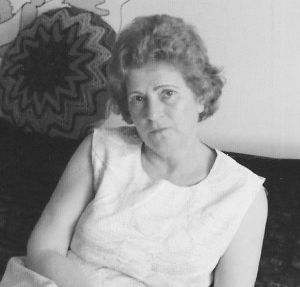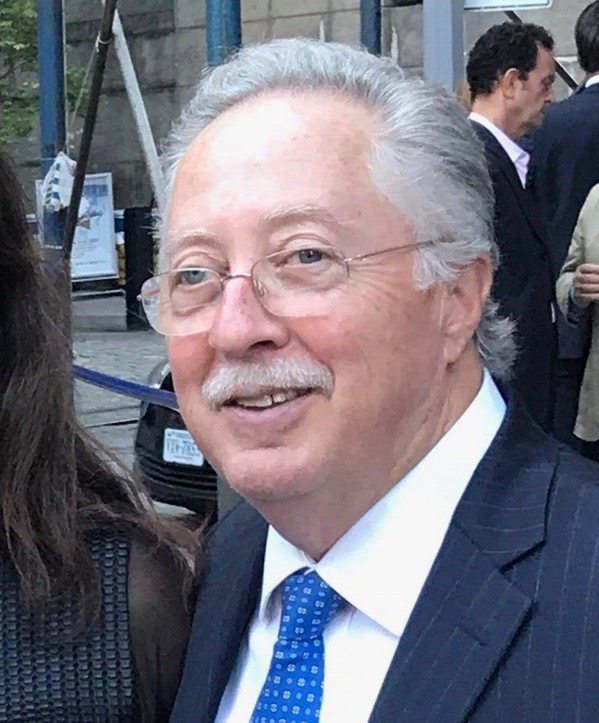- Local Survivor registry
- ROSE HIRSCH
- Local Survivor registry
- ROSE HIRSCH
Survivor Profile

ROSE
HIRSCH
(1921 - 2023)
PRE-WAR NAME:
ROUSSEANU WIESEL--CENTENARIAN (AGE ,102)
ROUSSEANU WIESEL--CENTENARIAN (AGE ,102)
PLACE OF BIRTH:
MICHALOVCE, SLOVAKIA
MICHALOVCE, SLOVAKIA
DATE OF BIRTH:
OCTOBER 27, 1921
OCTOBER 27, 1921
LOCATION(s) BEFORE THE WAR:
MICHALOVCE, SLOVAKIA (CZECHOSLOVAKIA)
MICHALOVCE, SLOVAKIA (CZECHOSLOVAKIA)
LOCATION(s) DURING THE WAR:
AUSCHWITZ CONCENTRATION CAMP
AUSCHWITZ CONCENTRATION CAMP
STATUS:
CHILD SURVIVOR
CHILD SURVIVOR
RELATED PERSON(S):
FERDINAND HIRSCH - Spouse (Deceased),
ANDREW HIRSCH - Son,
CILA HIRSCH HERSKOVITS - Daughter,
SUSAN BORENSTEIN HIRSCH - Daughter-in-law
-
BRIEF BIOGRAPHY BY NANCY GORRELL
Rose (Rousseanu) Wiesel Hirsch was born in Michalovce, Slovakia on October 27, 1921. She came from a large family of 10 siblings, five sisters and five brothers. By 1930, Michalovce had an expanding population of over 3,300 Jews and by 1940, over 4,100. The city had a Yeshiva of 80 students, a Jewish elementary school, and a junior high school after Jewish children were expelled from public schools. An Agudat Israeli Zionist group became active in 1913. All this history is important because Rose has not shared her biography with her children. Andrew, her son, knows only her date of birth, her place of birth, and that she was an inmate in Auschwitz. Rose, 18 years old at the outbreak of the war, refuses to relate stories of her childhood, growing up years and war experiences. From the history of the region, we know that on March 25, 1942, 120 Jewish girls were deported to Auschwitz via Poprad. Rose may have been one of those girls. If so, she spent at least three years in Auschwitz before being liberated. Andrew relates in his interview that the family went back to their home village after the war. Rose gave birth to him in 1948 in Michalovce, their hometown, and a year later, 1949, they all went to Israel and settled on a moshav outside of Tel Aviv near the airport.
Rose Hirsch Rifka bat Tzvi’s Passing: Age 101
Rose, the second oldest survivor in the Registry, passed on May 8, 2023.
Andrew recalls their early days in Israel:
We moved to Israel when I was a year old, and was housed in tents with hundreds of other families. After a few months we moved into an old abandoned Arab house with other relatives. Years later, we moved to Moshav Tzafaria, a new village constructed for 80 refugee families. The school I attended was in a shack in our village. My father worked in a local grocery store and my mother raised geese in our backyard to help supplement our income. My mom’s brother and sister lived near by in the same moshav. Another of my mom’s brothers settled in a kibbutz, Sdai Eliyaho. Where we lived in the moshav, there was no indoor plumbing or electricity.We used an outhouse and kerosene lamps. When it rained or was muddy outdoors, my sister, Cila – four and half years younger – needed me to carry her to the outhouse.
Rose and her family moved to America in 1962. Relatives in New York persuaded Ferdinand to come to open up a business. A neighbor in Israel wanted him instead to settle in Los Angeles with him, but Ferdinand said he didn’t want the help, and he decided to stay in New York with his brother and cousin. Andrew said in his interview, “I’m glad my father stayed in New York because there I met my future wife, Susan Eisenberg Borenstein. In New York, Ferdinand found employment in a plastic factory for $40 per week. Rose worked in a factory as a seamstress for about the same of weekly wage.
Editor’s Note:
Refer to Historical Notes below for Michalovce, Czechoslavkia -
SURVIVOR INTERVIEW with Andrew Hirsch, son
Refer to Biography of Rose Hirsch above.
-
HISTORICAL NOTES:
Michalovce, formerly in the Kingdom of Hungary (11th century – 1918), was called Nagymihály. It was the main city in the Nagy-mihályi járás(district) of Zemplén megye (county).From the end of World War I until 1939, Michalovce was part of the new nation of Czechoslovakia. In March 1939, after the collapse of the Czechoslovak government, Michalovce was part of the autonomous Slovak Republic while southern Slovakia and Carpathian Ruthenia were ceded back to Hungary.
The Jewish population in 1910 was 2,200 and grew steadily, to 3,386 in 1930, and 4,197 in 1940, with the influx of Jewish refugees from Galicia arriving during WWI and joining the Hasidic congregation.
A Beth Jacob school was opened in the 1930’s, but the first Jewish elementary school was only opened in 1939-40, expanding to include the junior high school grades after Jewish children were expelled from the public schools. The school eventually reached an enrollment of 500.
In 1941, the authorities closed down 436 Jewish businesses and dozens of men were seized for forced labor. On 25 March 1942, 120 Jewish girls were deported to Auschwitz via Poprad and in early April, 100 young men were sent to the Majdanek concentration camp via Zilina.
At this time, the first partisan groups came into existence in Eastern Slovakia, in the forests surrounding Michalovce and Humenné and centered in Vinné. One of the first groups, headed by Pavel BOROŠ, had seven Jews from Michalovce that managed to escape from the deportations and were the first to join up with the partisans.
In early May, about 3,100 Jews were deported to the Lublin district of Poland, including nearly two-thirds to the Lukow ghetto where most perished. The remaining 1,000 Jews were sent to western Slovakia on 15 May 1944 as the fighting neared the city.
About half of the post-WWII Michalovce Jewish community of 600 left for Israel in 1949. A few dozen Jews remained in 1995 and there are very few Jews left in Michalovce today (2009).
-
Sources and Credits:
Credits: SSBJCC Interview June 16, 2017 with Andrew Hirsch; Biography by Nancy Gorrell



